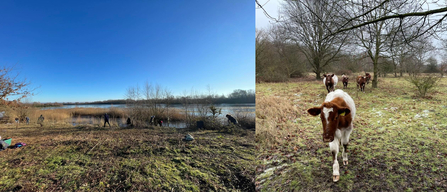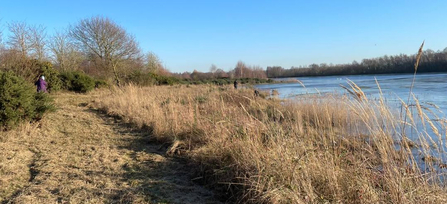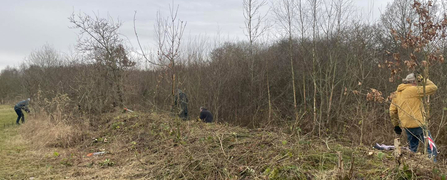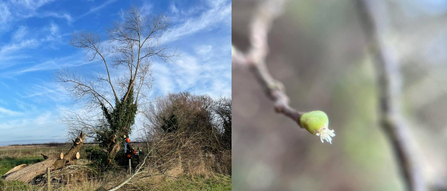Well, January has been lovely - lots of blue skies and frosty mornings, and lots of work done around the nature reserve. We've been out with our amazing volunteers and some corporate work parties, who come to spend the day bashing scrub in the green gym. This month we were joined by a local group who helped us clear some marginal vegetation over at Teal Lake. This is vegetation that grows at the water's edge, normally due to floating seed that ends up bobbing around the edges of the lakes. Here it was a mixture of birch, willow, alder and a fair amount of bramble. Regardless of the scratches, this hardy bunch cleared about 100m of the shoreline so that our grassland will merge seamlessly into the shallows of the lake, removing the barrier of trees from visiting wildlife, and improving the vista across the water for our visitors. Hopefully the cattle and sheep will be able to access this area now and keep the bramble in check.
Diary of the Whisby wardens: January 2025

Some grassland areas get cut every year as part of our meadow management, and some don't - these areas are referred to as rough grassland. Without repeated mowing, tougher species tend to take over and form tussocks, but we lose the more delicate flowers. Rough grasslands are great for providing cover for small mammals and reptiles, giving them hiding places from airborne predators and tough material to slough off old skins. But if we simply leave these areas they will eventually become scrub, so every so often we will mow targeted areas to reset the clock and start the process again. This year we've been over at Teal Lake targeting areas that the livestock find it hard to get into and linking up with the clearance done by the work party.

Big changes are happening on Magpie Walk - you may have noticed that we're clearing down the side of the path next to an area known as Plover Beach. When Whisby was young this area was bare gravel and plovers nested here. It's now a glorious grassland. By opening this area up we're letting light onto the ground to encourage flowering plants, providing basking areas for the good colonies of grass snakes and common lizards in this area, and hopefully providing good habitat for the hazel pot beetle, which was reintroduced at Whisby in 2004 and has been found to be doing well close to this area. This strip will grow back; the last time it was cleared was seven years ago. By cutting areas like this in rotation we increase the types of habitats around the nature reserve and provide homes for as much wildlife as possible.

The warden team has more responsibility than just Whisby, we also manage various reserves around the Lincoln area. This month some of us have been up at Ashing Lane re-pollarding a couple of big willows along a public footpath. We've talked about coppicing before, which is cutting a tree to the ground to allow it to regrow. Pollarding is the same idea, but further up the tree, so you end up with new growth higher up. These trees were originally pollarded about 15 years ago and have now reached the point where the work needs to be done again. We're hoping to target a couple of the trees surrounding the site each year.

We're continuing to see lots of signs of spring around the reserve. Hazels are flowering, not just with the catkins which are the male flower, but also the tiny female flowers. Usually these are red or pink, but this one (above right) in Orchid Glade has lovely white flowers. Next time you see a hazel, get up close and see if you can spot them.

